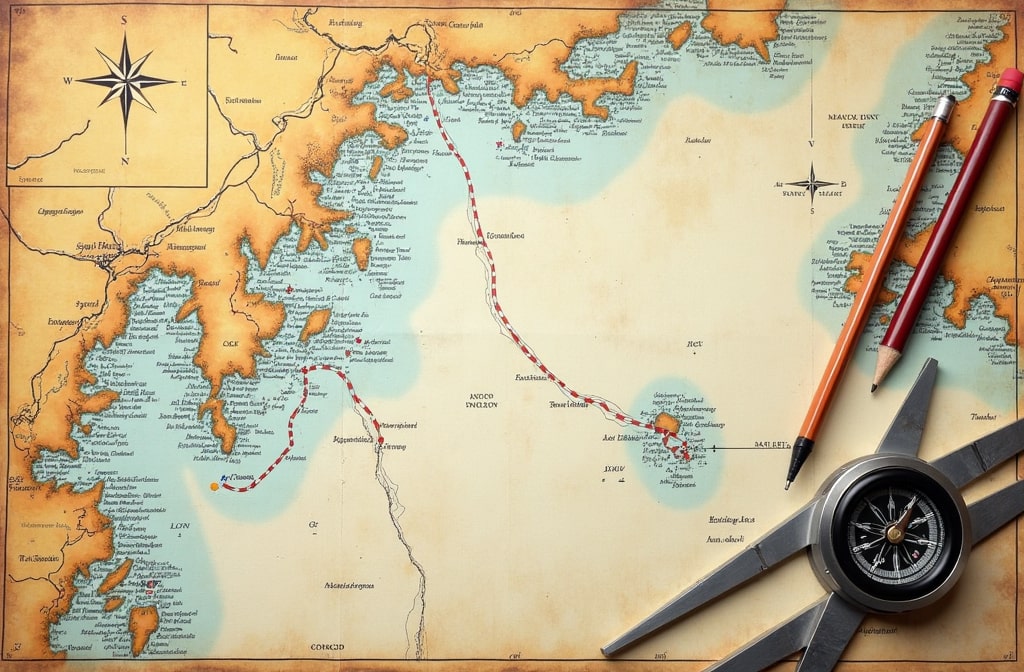As you commence your maritime journey, the principles of passage planning serve as your navigational blueprint, guiding you through unpredictable waters with precision. By considering factors like currents, tides, and potential obstacles, you lay the foundation for a safe and successful voyage. But what happens when unforeseen challenges arise, threatening to disrupt your carefully crafted plan? Stay tuned to uncover how mastering the art of passage planning equips you to navigate the seas with confidence and adaptability, ensuring smooth sailing ahead.
Importance of Passage Planning
Passage planning is a critical aspect of maritime navigation, serving as the foundation for safe and efficient voyages. Crew communication plays a crucial role in this process, ensuring that all members are aware of the intended route, potential hazards, and emergency procedures.
Effective communication among the crew helps in sharing responsibilities and maintaining a high level of situational awareness throughout the journey.
Risk assessment is another key element in passage planning. By thoroughly evaluating potential risks such as adverse weather conditions, navigational challenges, or congested waterways, sailors can proactively plan for contingencies and mitigate dangers.
This involves considering factors like the vessel’s capabilities, the experience of the crew, and the availability of support services along the planned route.
Weather Considerations
Taking into account the dynamic nature of maritime environments, weather factors hold significant importance in ensuring the safety and success of a voyage.
Wind patterns play a vital role in passage planning. Understanding prevailing winds, such as trade winds or westerlies, can help in optimizing route efficiency and fuel consumption. It’s essential to evaluate wind direction and strength to plan for comfortable sailing conditions and avoid potential hazards like strong gusts or storms.
Tidal influences are another important aspect to bear in mind when planning a passage. Tides can affect water depth, currents, and navigation through narrow channels or shallow areas.
Knowing the timing of high and low tides is essential for safe passage and to prevent grounding or collision risks. Additionally, tidal currents can either assist or impede progress, impacting the overall passage time.
Charting a Safe Course
To guarantee the safety and efficiency of your voyage, charting a safe course is a critical step in passage planning. When charting your course, prioritize route optimization to ascertain you navigate the waters in the most efficient manner.
Consider factors such as currents, winds, and potential obstacles to determine the best path to your destination. Regular equipment maintenance is also essential for safe passage.
Check navigation instruments, communication devices, and safety equipment to confirm they’re functioning properly before commencing on your journey. By maintaining your equipment, you reduce the risk of malfunctions that could jeopardize your safety at sea.
Incorporating these practices into your passage planning routine will help you sail with confidence, knowing that you have taken the necessary steps to chart a safe course and maintain reliable equipment throughout your voyage.
Avoiding Hazards
Steering through the open waters presents various challenges that require careful contemplation to guarantee a safe and successful voyage. One critical aspect of passage planning is avoiding hazards. To achieve this, a thorough risk assessment must be conducted to identify potential dangers along the intended route. Hazard identification plays an essential role in ensuring the safety of the vessel, crew, and cargo.
When conducting a risk assessment, it’s essential to take into account factors such as adverse weather conditions, underwater obstacles, traffic congestion, and navigational hazards.
Navigation Precision
Maneuvering with precision is a fundamental aspect of successful passage planning. When it comes to navigation precision, employing accurate navigation techniques is essential. Utilizing tools like GPS, radar, and electronic chart plotters can enhance your ability to navigate with accuracy. These technologies aid in determining your vessel’s exact position, guaranteeing you stay on course and avoid potential obstacles.
Route optimization is another key component of navigation precision. By carefully planning your route, taking into account factors such as currents, tides, and weather conditions, you can optimize your path to reach your destination efficiently. Utilizing software that helps analyze and suggest the best route based on these variables can further enhance your navigation precision.
Incorporating these navigation techniques and route optimization strategies into your passage planning process will greatly improve your ability to navigate with precision. By paying attention to detail and consistently monitoring your progress, you can secure a safe and successful journey.
Frequently Asked Questions
What Are the Legal Requirements for Passage Planning?
To ascertain compliance with legal obligations, you must adhere to planning regulations when outlining your passage plan. It is essential to follow these guidelines meticulously to guarantee safety and regulatory compliance during your maritime journey.
How Can I Account for Tidal Currents in My Plan?
When planning your passage, consider tide effects by checking current predictions. Incorporate this data into your plan to adjust for the impact of tidal currents on your vessel’s speed and course.
Is It Necessary to Update Passage Plans During the Voyage?
During your voyage, it’s essential to update passage plans. By making route adjustments and staying informed with weather updates, you guarantee safe navigation. Regular updates help adapt to changing conditions and enhance overall voyage management.
What Emergency Procedures Should Be Included in Passage Planning?
Make sure your passage plan includes specific emergency procedures like man overboard drills, fire drills, and abandon ship protocols. Contingency plans for adverse weather, mechanical failures, or medical emergencies must be clear and actionable.
How Do I Factor in Vessel Traffic in My Passage Plan?
When planning your passage, consider vessel traffic by using navigation tools like AIS. Identify high-traffic areas, monitor other vessels’ movements, and adjust your course accordingly to avoid collisions. Stay alert and maintain safe distances.







